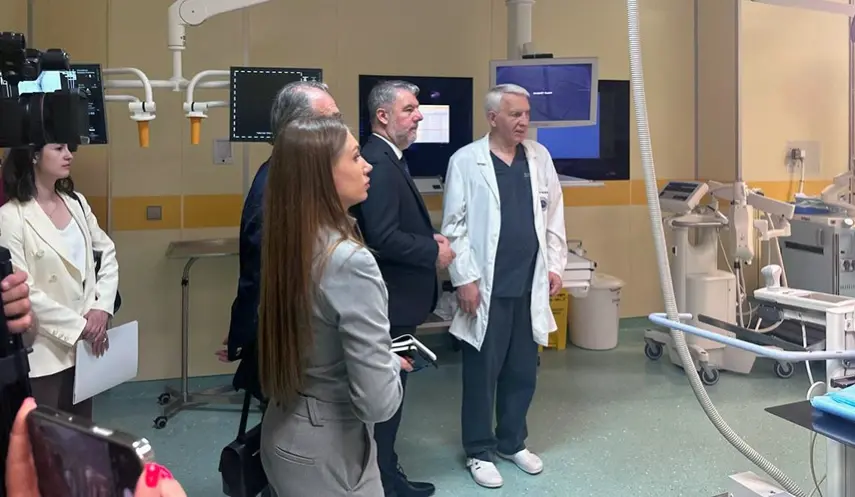KALABIĆ: JASENOVAC CONCENTRATION CAMP WAS UNIQUE IN ITS MONSTROSITY
Serbia - Republika Srpska - Kalabić - Jasenovac - culture of remembrance
04/26/2025
16:56

BELGRADE, APRIL 26 /SRNA/ - Historian Radovan Kalabić emphasized the importance of the decision by the authorities of Republika Srpska and Serbia to jointly commemorate the Remembrance Day for the victims of the Ustashe genocide against Serbs, Jews, and Roma in the Independent State of Croatia /NDH/ and the 80th anniversary of the Jasenovac camp breakout, because this great event must not be forgotten.
Kalabić believes that the Jasenovac camp represents one of the most painful points in national history, as it was unique in its monstrosity and the third largest concentration camp in Europe by the number of victims, where hundreds of thousands of Serbs, Jews, and Roma were murdered in the most brutal manner.
"Among other things, the most monstrous weapons and tools were used for that. It was a camp in the criminal creation known as the NDH, also infamous for being the only one that had a camp specifically for children," Kalabić told Srna.
He believes that the uniqueness of that camp should be emphasized in several aspects, and that it must be remembered that the crimes committed in the Jasenovac "factory of death" left heavy consequences that continue to burden the collective consciousness of the Serbian people to this day.
"Jasenovac was the only camp that was not liberated by Partisans, even though they were stationed nearby with the bulk of their forces, unlike other camps in Europe, which were primarily liberated by Allied forces," Kalabić pointed out.
He emphasized that Jasenovac was also unique because it was a camp where the inmates organized a breakout once they realized that no help was coming from any side.
"The breakout began on April 22 and lasted until five days before the official end of the Second World War, that is, until May 4, 1945," Kalabić recalled.
The third aspect that made Jasenovac unique, according to him, was the fact that it was the only Nazi camp where everything was destroyed down to the foundations - both the buildings and the camp’s fencing.
"This was done so that, uniquely among camps in Europe, no traces of the monstrous factory of death would remain," Kalabić explained.
He claims that there was a plan and an intention to erase all evidence and traces of the existence of the Jasenovac concentration camp from historical and collective memory.
Kalabić believes that even today many rightly wonder why the Partisans never attempted to liberate the camp inmates, especially given that, as he says, from 1945 they had the bulk of their forces stationed on one side of the Sava River, and already from May 1942, with the Slavonian Corps on the other side of the Sava.
The inmates of the infamous Ustashe-run Jasenovac camp, 1,073 of them, launched a breakout on April 22, 1945, and only 169 inmates survived.
According to data from the Donja Gradina Memorial Area, around 700,000 people were killed at Jasenovac during World War II, including 500,000 Serbs, 40,000 Roma, 33,000 Jews, and 127,000 anti-fascists, with 20,000 children among the victims.

GOLDSCHMIDT: STILL WAITING FOR APOLOGY FROM BiH AUTHORITIES

POSSIBLE COOPERATION BETWEEN ALMAZOV RESEARCH CENTRE AND UNIVERSITY CLINICAL CENTRE

SARAJEVO "TROIKA" WANTS TO WEAKEN SNSD - THE BIGGEST OBSTACLE TO UNITARY BiH



